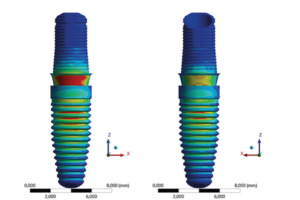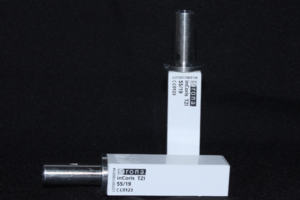AUTORES
Pedro Henrique Rio Barros
Graduando em Odontologia – Unisagrado.
Orcid: 0000-0001-5463-7013.
Gustavo Ossamu Blatt Ohira
Mestrando em Prótese Dentária – Uningá.
Orcid: 0000-0001-8251-7510.
Vinicius Rizzo Marques
Doutor em Reabilitação Oral – FOB/USP; Coordenador do mestrado em Reabilitação Oral e Implantes – PUCMM, República Dominicana; Professor da especialização em Prótese Dentária – CPO; Professor da especialização em Prótese Dentária – Facop.
Orcid: 0000-0002-9749-876X.
Samira Sandy Ferreira Strelhow
Doutora em Reabilitação Oral – FOB/USP; Professora da especialização em Prótese Dentária – CPO; Professora da especialização em Prótese Dentária – Facop.
Orcid: 0000-0001-8929-7215.
Henrique Müller de Quevedo
Doutor em Reabilitação Oral – FOB/USP; Professor da especialização em Prótese Dentária – CPO; Professor da especialização em Prótese Dentária – Facop.
Orcid: 0000-0001-7762-5146.
Patrick Henry Machado Alves
Doutor em Reabilitação Oral – FOB/USP; Professor da especialização em Prótese Dentária – CPO; Professor de Periodontia e Clínica Integrada – Unisagrado.
Orcid: 0000-0003-2494-7808.
RESUMO
Este artigo teve como objetivo descrever um caso clínico de osteotomia prévia à instalação de dois implantes na região dos dentes 35 e 36, com o auxílio de um guia de referência em acetato e uma maxicut, para garantir a posição ápico-coronal ideal em relação à margem gengival da futura coroa protética, assegurando espaço para a acomodação dos tecidos moles peri-implantares, minimizando a saucerização, obtendo uma anatomia correta do arco côncavo gengival, melhorando a distância intermaxilar e a formação de um sulco gengival com profundidade adequada, além de permitir a utilização de um intermediário protético e a realização de um correto perfil de emergência, mais estético e biologicamente aceitável com espaço para o perfil crítico e subcrítico.
Palavras-chave – Prótese dentária; Implante dentário; Periodontia; Gengiva; Periodonto; Distância biológica.
ABSTRACT
This article aims to describe a clinical case where an osteotomy was performed previously to the installation of two dental implants in the region of tooth 35 and 36, with the aid of a maxicut and guided by a reference guide in acetate, to ensure the ideal 3D position, especially the apico-coronal in relation to the gingival margin of the future prosthetic crown, ensuring space for the formation of peri-implant soft tissues, minimizing saucerization, ensuring an adequate anatomy of the gingival concave arch, improving the intermaxillary distance and allowing for the establishment of an adequate gingival sulcus, with the use of a prosthetic abutment and the realization of a correct, more aesthetic and biologically acceptable emergence profile, providing space for critical and subcritical gingival contours.
Key words – Dental prosthesis; Dental implants; Periodontics; Gingiva; Periodontium; Biologic width.
Recebido em dez/2021
Aprovado em dez/2021
Referências
- Gargiulo AW, Wentz GM, Orban B. Dimensions and relations of the dentogingival junction in humans. J Periodontol 1961;32(3):261-7.
- Mendonça JAG. Avaliação e análise das distâncias biológicas do periodonto mediante nova metodologia [tese]. Bauru: FOB/USP, 2001.
- Coesta PTG. A extensão das distâncias biológicas do periodonto marginal: comparações clínicas e radiográficas [dissertação]. Bauru: FOB/USP, 2003.
- Cochran DL, Hermann JS, Schenk RK, Higginbottom FL, Buser D. Biologic width around titanium implants. A histometric analysis of the implant-gingival junction around unloaded and loaded nonsubmerged implants in the canine mandible. J Periodontol 1997;68(2):186-98.
- Berglundh T, Lindhe J. Dimension of the periimplant mucosa. Biological width revisited. J Clin Periodontol 1996;23(10):971-3.
- Albrektsson T, Zarb G, Worthington P, Eriksson AR. The long-term efficacy of currently used dental implants: a review and proposed criteria of success. Int J Oral Maxillofac Implants 1986;1(1):11-25.
- Laurell L, Lundgren D. Marginal bone level changes at dental implants after 5 years in function: a meta-analysis. Clin Implant Dent Relat Res 2011;13(1):19-28.
- Cassetta M, Driver A, Brandetti G, Calasso S. Peri-implant bone loss around platform-switched morse taper connection implants: a prospective 60-month follow-up study. Int J Oral Maxillofac Surg 2016;45(12):1577-85.
- Guven SS, Cabbar F, Guler N. Local and systemic factors associated with marginal bone loss around dental implants: a retrospective clinical study. Quintessence Int 2020;51(2):128-41.
- Coli P, Christiaens V, Sennerby L, Bruyn H. Reliability of periodontal diagnostic tools for monitoring peri-implant health and disease. Periodontol 2000 2017;73(1):203-17.
- Linkevicius T, Apse P. Biologic width around implants. An evidence-based review. Stomatologija 2008;10(1):27-35.
- Levine RA, Ganeles J, Kan J, Fava PL. 10 keys for successful esthetic-zone single implants: importance of biotype conversion for lasting success. Compend Contin Educ Dent 2018;39(8):522-9.
- Noelken R, Moergel M, Pausch T, Kunkel M, Wagner W. Clinical and esthetic outcome with immediate insertion and provisionalization with or without connective tissue grafting in presence of mucogingival recessions: a retrospective analysis with follou-up between 1 and 8 years. Clin Implant Dent Relat Res 2018;20(3):285-93.
- Linkevicius T, Puisys A, Steigmann M, Vindasiute E, Linkeviciene L. Influence of vertical soft tissue thickness on crestal bone changes around inplanst with platform switching: a comparative clinical study. Clin Implant Dent Relat Res 2015;17(6):1228-36.
- Linkevicius T, Apse P, Grybauskas S, Puisys A. Influence of thin mucosal tissues on crestal bone stability around implants with platform switching: a 1-year pilot study. J Oral Maxillofac Surg 2010;68(9):2272-7.
- Linkevicius T, Apse P, Grybauskas S, Puisys A. The influence of soft tissue thickness on crestal bone changes around implants: a 1-year prospective controlled clinical trial. Int J Oral Maxillofac Implants 2009;24(4):712-9.
- Linkevicius T, Linkevicius R, Alkimavicius J, Linkeviciene L, Andrijauskas P, Puisys A. Influence of titanium base, lithium dissilicate restoration and vertical soft tissue thickness on bone stability around triangular-shaped implants: a prospective clinical trial. Clin Oral Implants Res 2018;29(7):716-24.
- Linkevicius T, Puisys A, Linkeviciene L, Peciuliene V, Schlee M. Crestal bone stability around implants with horizontally matching connection after soft tissue thickening: a prospective clinical trial. Clin Implant Dent Relat Res 2013;17(3):497-508.
- Linkevicius T, Puisys A, Steigmann M, Vindasiute E, Linkeviciene L. Influence of vertical soft tissue thickness on crestal bone changes around implants with platform switching: a comparative clinical study. Clin Implant Dent Relat Res 2015;17(6):1228-36.
- Puisys A, Linkevicius T. The influence of mucosal tissue thickening on crestal bone stability around bone-level implants. A prospective controlled clinical trial. Clin Oral Implants Res 2013;26(2):123-9.
- Vervaeke S, Matthys C, Nassar R, Christiaens V, Cosyn J, De Bruyn H. Adapting the vertical position of implants with a conical connection in relation to soft tissue thickness prevents early implant surface exposure: a 2-year prospective intra-subject comparison. J Clin Periodontol 2018;45(5):605-12.
- Carvalho RD, Cartaxo AC, Martins ARLA, Gurgel BCV. Aumento de mucosa queratinizada ao redor de implantes dentários – revisão integrativa. ImplantNewsPerio 2016;1(2):305-11.
- Rescala B, Vidal B, Rosalem Jr. W, Silveira BM. Enxerto gengival livre para ganho de tecido queratinizado prévio à instalação de implante na região posterior de mandíbula: relato de caso com três anos de acompanhamento. ImplantNewsPerio 2018;3(1):58-64.
- Sousa DN, Pedreira APRV, Naldi LF. Dimensão e composição das distâncias biológicas em dentes e implantes. ImplantNews 2010;7(2):249-54.
- Esposito M, Maghaireh H, Pistilli R, Grusovin MG, Lee ST, Trullenque-Eriksson A et al. Dental implants with internal versus external connections: 5-year post-loading results from a pragmatic multicenter randomised controlled trial. Eur J Oral Implantol 2016;1(2):129-41.
- Vigolo P, Gracis S, Carboncini F, Mutinelli S. AIOP (Italian Academy of Prosthetic Dentistry) Clinical Research Group. Internal versus external connection single implants: a retrospective study in an Italian population treated by certified prosthodontists. Int J Oral Maxillofac Implants 2016;31(6):1385-96.
- Pikner SS, Grondahl K, Jemt T, Friberg B. Marginal bone loss at implants: a retrospective, long-term follow-up of turned Brånemark System implants. Clin Implant Dent Relat Res 2008;11(1):11-23.





